Difference between revisions of "Nappalan"
| Line 14: | Line 14: | ||
</p> | </p> | ||
<p align=center> | <p align=center> | ||
| − | ''On the[[flesh side]] coated [[Lamb leather|lambskin]] of a jacket.''<br></p> | + | ''On the [[flesh side]] coated [[Lamb leather|lambskin]] of a jacket.''<br></p> |
<p> </p> | <p> </p> | ||
| Line 26: | Line 26: | ||
<p> </p> | <p> </p> | ||
| − | The thin [[finish| | + | The thin [[finish|colour layer]] is sensitive and makes the leather [[leather damages|wear-sensitive]] (safety belt, carrying strap from bags). The surface is then visible rough in such areas. The roughness of the suede under the thin layer comes back through. The coatings are available in [[Gloss of leather|dull to glossy]]. |
Revision as of 17:56, 4 February 2017
Nappalan leather is leather, were a thin layer of colour has been applied to a nubuck or suede. Usually suede leather of goats or lambs for clothing leather are finished this way. It makes the surface smooth as with top grain leather. Such leathers are very soft and particularly light weight. They are referred to as "silk leather" and the finish is called "nappalan coating". On the internet, the term napalan leather with one "p" also sometimes appears.
Nappalan coatings can be applied to the flesh side of a fur or to suede without fur. Such leather sometimes is called "Nappato leather".
On the flesh side coated lambskin of a jacket.
Goat suede is smoothed by a coating. In the close-up, the base structure can still be seen.
The thin colour layer is sensitive and makes the leather wear-sensitive (safety belt, carrying strap from bags). The surface is then visible rough in such areas. The roughness of the suede under the thin layer comes back through. The coatings are available in dull to glossy.
The surface can be re-roughened with little mechanical stress.
The same applies to dry-cleaning. Particularly when cleaning with solvents, the coating can dissolve, and the entire jacket is then rough again. A rescue is then no longer possible.
Additional information







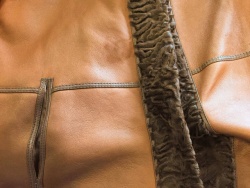
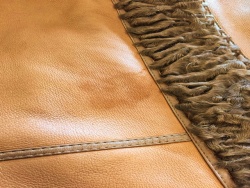
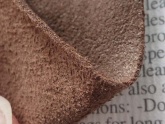
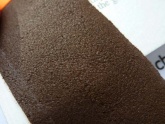
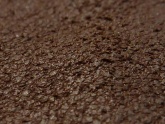
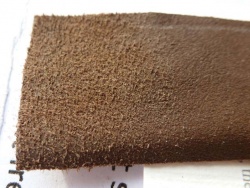
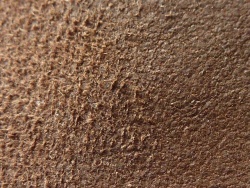

 a kotori web solution
a kotori web solution